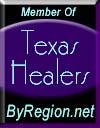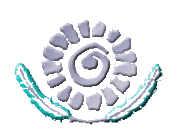 |
||||||||||||||||||||||||
|
|
||||||||||||||||||||||||
 |
||||||||||||||||||||||||
 |
||||||||||||||||||||||||
|
||||||||||||||||||||||||
 |
 |
|
To the Editor, May I humbly suggest that if Advance, which touts itself as "The Nation's Physical Therapy Newspaper," wishes to be taken seriously and to perform an educational service to physical therapists, that it refrain in the future from publishing clinical claptrap such as the "Lighter Touch" article on craniosacral therapy by F.L. Burget in the September 13, 2002 issue. This article states as fact (with nary a hint of reference to the scientific literature) that there exists a craniosacral rhythm. No such rhythm has ever been detected, except by those with "trained hands," for the simple reason that no such rhythm exists. Simply making an assertion that a craniosacral rhythm exists, and that it can be detected and modulated by trained hands, does not make it so. Likewise, I can assert that waving a triangular piece of metal over my patients will synergize their life energy forces and heal their illnesses. But my assertion does not make it so. Yet, following the lead of craniosacral therapists, I can utilize the old device of referring to my detractors as being unable to "think outside the box", of being rigid in their thinking and unwilling to adopt new knowledge and findings into clinical practice. It will be unfortunate if uninitiated or unquestioning clinicians were to be influenced by this article to believe that there is a rational, scientific basis for this "therapy." There is not. Craniosacral therapy does not even pass a common sense, face validity test. But don't take my word for it. I encourage your readers to search medline using "craniosacral therapy" as a keyword. Read the literature, and you will learn that many published peer-reviewed research articles conclusively show that trained craniosacral therapists have unsurprisingly poor inter-reliability when they independently assess the putative rhythm on the same subject. They fail because these raters are trying to rate something that is a figment of their imagination. In the face of any evidence to support the notion of a craniosacral rhythm, it is time for physical therapists, and your magazine, to ignore craniosacral therapy in the hopes that it will fade away in a fashion similar to phrenology. Respectfully, Steven Sawyer, PT, Ph.D. RESPONSE TO ABOVE LETTER October 25, 2002 To the Editor, We applaud Advance magazine for putting the patients first and being open to presenting complementary methods of treatment to the healthcare professionals that the magazine serves. We were pleased to be asked to contribute to the growing library of articles Advance for Physical Therapists and PT Assistants has printed on the benefits of CranioSacral therapy. Two that stand out in our minds are the one in October, 1996, by John Murphy, about the Olympic diver who overcame vertigo using CranioSacral techniques and the other in February, 1998, that discusses Dr. Upledger's rationale for the therapy. Dr. Sawyer states that CranioSacral rhythm is not a "fact". The fact is that John Upledger, DO, began researching craniosacral rhythm because of the rhythm he saw with his own eyes in the membranes surrounding the spinal cord while assisting in a spinal operation. Dr. Upledger is a physician who has been named by Time magazine as one of the 100 innovators of the century. Many prominent medical doctors, such as Andrew Weil, MD, (a Harvard Medical School graduate) have written and spoken about the benefits patients receive from CranioSacral therapy. The growing list of practitioners who both support and use CranioSacral techniques in their practices include MD's, DO's, DC's, PT's, OT's, RN's, DDS's, and massage therapists, to name just a few. Currently, in the North Texas Hospital for Children at Medical City Dallas, two conjoined twins under the care of Dr. Kenneth Salyer, founder of the World Craniofacial Foundation, are receiving CranioSacral therapy at the hands of a trained PT in order to enhance their survival during separation surgery. This has been widely reported on the television news as well as in the print media (read the story at www.cbs11tv.com). We doubt that a man of Dr. Salyer's stature would engage in claptrap to treat such a serious situation as the lives of these two babies. Dr. Sawyer also stated that there were no references to scientific literature. There are many such references available. Milicien Tettambel, DO, coauthored an article in the Journal of the American Osteopathic Association (vol. 78, October, 1978, p. 149) titled "Recording of the Cranial Rhythmic Impulse", in which she reported using force transducers taped across the frontal bone and the two mastoid processes of the temporal bones on 30 subjects. She successfully recorded three separate rhythms on all the subjects. The cardiac pulses and respiratory rhythms were clearly recorded, as was a third pulse at an average of 8 cycles per minute. She presumed the third rhythm to represent the cranial rhythmic impulse. Jenkins, Campbell & White authored "Modulation Resembling Traube-Hering Waves Recorded in Human Brain" in European Neurology (Vol. 5:1-6, 1971), in which they reported that using ultrasound echo pulsations were observed at 7 cycles per minute in a human subject. The pulsations did not change when the subject held his breath. Traube-Hering pulsations are usually measured on the ear. When they observed the Traube-Hering pulsations, they differed significantly from the 7-per-minute pulsations of the brain. Therefore, they concluded that the 7-per-minute pulsations were autonomous and not related to either cardiac, respiratory, and/or Traube-Hering pulsations. Also, Wallace, Avant, McKinney & Thurstone at Winston-Salem, NC, reported in the Journal of Neurology in 1975, in an article titled "Ultrasonic Measurement of Intra-Cranial Pulsations at 9 Cycles Per Minute" that they had observed by ultrasound an apparently independent 9-cycle-per-minute intracranial pulsation in the brain and membrane tissues of a human subject. There is not room enough in one letter to list the pages of scientific and medical studies that have been published on the CranioSacral rhythm. We are sure if anyone chose to go to Dr. Upledger's website at www.upledger.com, they would find many more articles and references on the subject. Patients report lasting benefits from the therapy. Many people may discount the patient's experience as "anecdotal" evidence but to the individual patient they could care less what it is called when they have gotten results. If this were simply an unfounded assertion, we doubt so many people from so many backgrounds would be using the methods in their practices. Trained hands are necessary in any delicate physical interaction with the body (talk to anyone who has been touched by untrained or improperly trained hands). We would much prefer to have blood drawn by trained hands rather than the nurse or technician fresh out of the classroom. In the United States, doctors are taught there is one pulse. In Chinese, Ayurvedic, and Tibetan medicine they teach there are between 9 and 12 pulses or more, depending upon the discipline being taught. Does that make the pulses felt by medicines that have been practiced for 5000 years non-existent because an American doctor practicing a discipline that is less than 200 years old cannot feel them? We don't think so. We feel that anyone who will think outside the box of the American medical paradigm will also be able to feel the pulses. In CranioSacral therapy, clinicians are taught to use not only their hands, but their whole body to palpate and find the rhythm within the individual patient. We are sorry Dr. Sawyer does not feel comfortable presenting complementary therapies to his students during the college years when they should be questioning and expanding their education to find out what they believe and what may work in their future practice. We have had the privilege of having the Director of the Occupational Therapy Program at Texas Tech University Health Sciences Center send several of their students to us for training. Medline is a wonderful tool. However, it only deals with information that is recognized by the traditional US medical community. It does not consider either methods or conditions recognized in other countries, but not yet "popular" in the United States. Just about any subject has articles to refute the information or theories about it. That conflicting information is what makes patients so uncertain about the direction they should choose in healthcare. Even today, you can find many articles by narrow-minded individuals that deny osteopathic, chiropractic, and the oriental medicines and techniques that have been practiced for thousands of years. We are glad to see that in this time of increased world communication Advance magazine leads the way to understanding the work that has been done by others in other fields and other countries that impacts upon and enhances the work of the therapists and clinicians here in the United States. Respectfully, Frankie L. Burget, OTR, RMT, CNDT |
| [Home] |
|
This website last updated on 31 July 2010 This website is entirely funded by Windsong Therapy and Wellness, Inc. |
|
Disclaimer: Confidentiality of data relating to individual patients and visitors, including their identity, is respected by this Web site. The owners of this Web site undertake to honor or exceed the legal requirements of medical / health information privacy that apply in Texas and the United States. The information on this Web site is Copyright © 1999-2008 Windsong Therapy and Wellness, Inc. Please obtain permission from Windsong Therapy and Wellness, Inc. before reproducing any information from this Web site. |